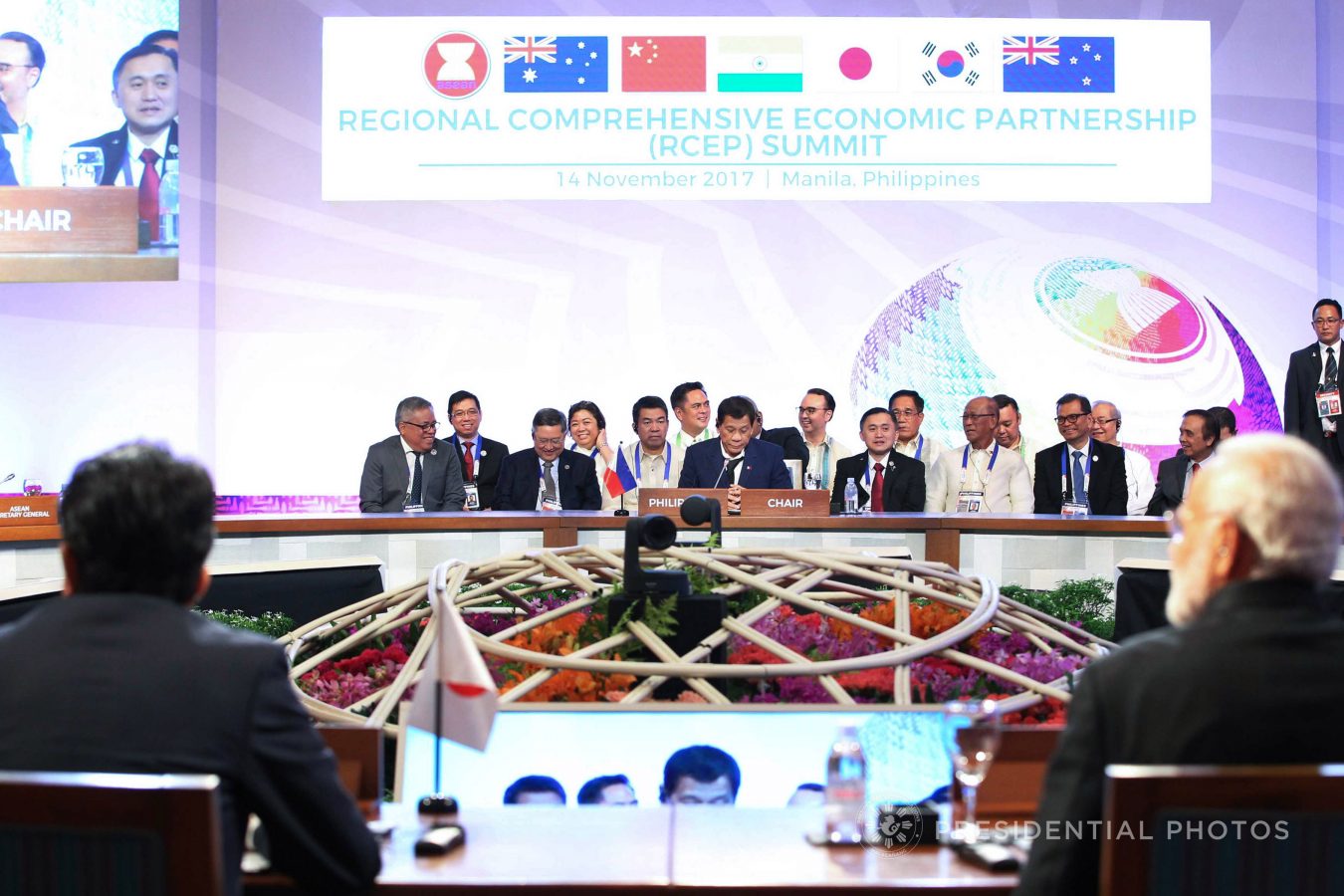India and RCEP: The way forward
August 1, 2019 | Expert Insights

Background
In 2012, the Association of South East Asian Nations (ASEAN) announced the formation of RCEP. The ASEAN countries, with six of its free trade partners, makes up about 45% of the 7.7 billion world population. This region also contributes to around 33% of global GDP and 28% of global trade measured by currency-based transactions.
Considered to be the world’s biggest free trade agreement, it comprises of 10 ASEAN member countries with its six free trade agreement partners India, China, Australia, New Zealand, Japan and South Korea.
The RCEP is an addition to the existing agreements, the ASEAN Free Trade Area (AFTA) and the ASEAN-India Free Trade Area (AIFTA).
Analysis
RCEP negotiations have taken six long years and is yet to bear fruit. It was mooted with the objective to achieve a modern, comprehensive, and mutually beneficial economic partnership agreement in trade of goods and services.
India is already a part of the ASEAN-India Free Trade Agreement. The RCEP offers India the opportunity to trade with five additional member countries, all of whom already have bilateral trade agreements with India. To the other stakeholders of RCEP, India offers access to a large market.
A NITI Aayog note states that India’s combined trade deficit with FTA partners like ASEAN, Japan and South Korea has almost doubled in the last eight years. India has a $104 billion trade deficit with the proposed 16-member RCEP grouping. That represents 64% of India’s total trade deficit.
The fundamental reason for this trade deficit is India’s weak manufacturing base. The contribution of the manufacturing sector to India’s GDP has stagnated at 17% since the 1990s. The manufacturing sector is important for sustainable economic growth as it forms a strong link between primary and tertiary sectors. For every job created in the manufacturing sector, two more are created in the primary and tertiary sector.
In comparison, countries like China, for example, have a robust manufacturing sector developed in the 1980s and early 1990s. Due to the economies of scale, Chinese manufacturers have recovered most of their fixed costs, and are able to produce goods at significantly lower costs, affording them an advantage over their Indian counterparts.
In the consultations between industry and the government - concerns were raised over cheap Chinese goods flooding India. Some of the worst affected Indian sectors would be steel, aluminium, copper, pharmaceuticals and textiles.
India is advocating a stricter Rule of Origin criteria for its domestic industry, as it fears that China could easily subvert the rules of origin and be able to dump their products here. These fears are warranted given multiple instances of re-routing of Chinese goods into Indian markets via India’s FTA partners like Sri Lanka. China has been slapped with the highest number of anti-dumping duty (ADD) strictures in the recent past.
China, in efforts to assuage Indian apprehensions, has improved market access to several Indian agricultural and pharmaceutical products. It is also working towards balancing the massive $60 billion-plus trade deficit that India suffers. If India and China eliminate customs duties on 85% of bilateral trade, Chinese imports that are worth $62.3 billion, will become duty-free. This will lead to an estimated loss of $6.2 billion to the Indian exchequer.
Counterpoint
Being a part of the RCEP also strengthens India’s “Act East” policy, which aims to cultivate extensive economic and strategic relations with the nations of South-East Asia in order to bolster its standing as a regional power.
The RCEP will create uniform trade-related rules, investment and competition regimes in the region. Domestic policy reforms would help Indian companies enter regional and global value chains. There will be a considerable boost to inward and outward foreign direct investment.
Assessment
- The conclusion of RCEP talks could change the contours of global trade. After the US withdrew from the now-defunct Trans-Pacific Partnership, the RCEP displays a continued commitment to free trade between countries in the region.
- In the face of the ongoing trade imbroglio between the US and China, there is a possibility of the geopolitical rift, which might force RCEP members to take sides even prior to its establishment.
- China, with its Belt and Road Initiative, seems to already have an advantage in terms of market access and India’s participation may help to check Chinese influence in the region.
- There must be cooperation between two of the biggest economies, India and China, for an effective conclusion of RCEP. Without India, the purpose of the agreement may be lost and this denies the region of a very large market potential and economic integration.
- India has to increase its domestic manufacturing base through a carefully crafted Industrial policy and take advantage of the market access that partner countries could provide. The RCEP, which primarily focuses on standardising tariffs across the region and providing market access for services and investment, may prove beneficial for multilateral trade in the region.
Read more








Comments